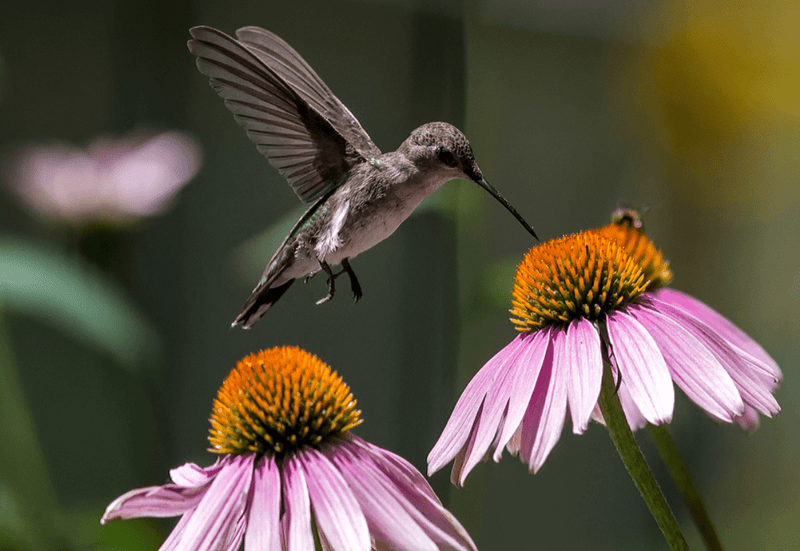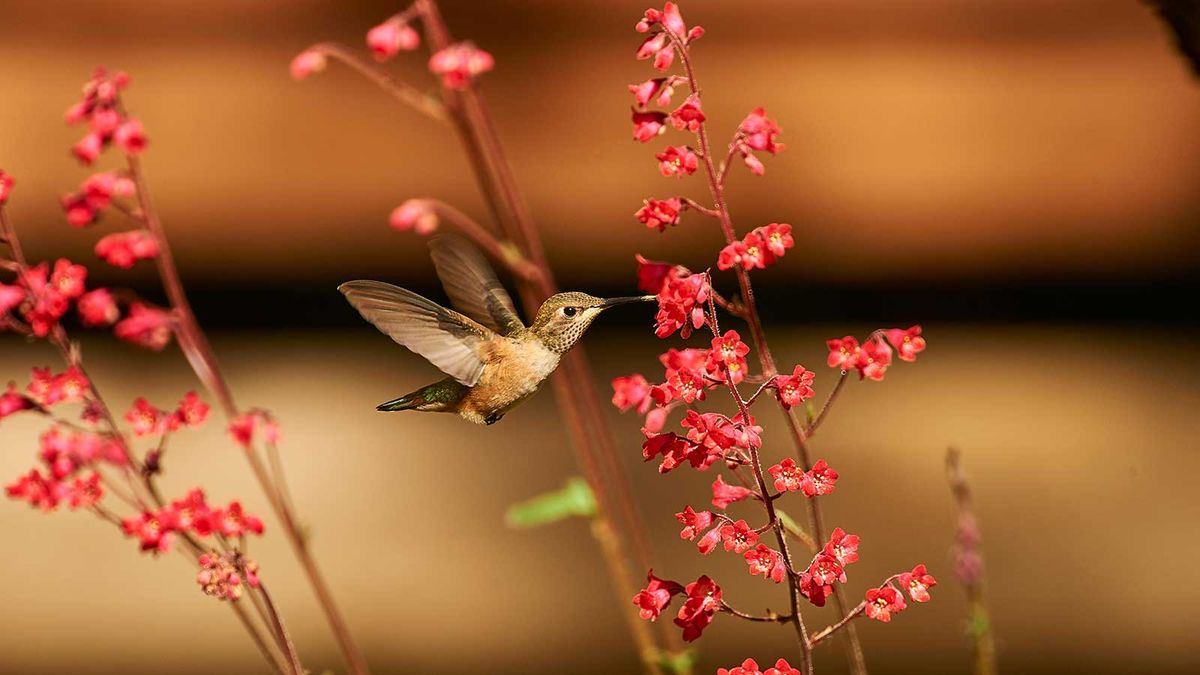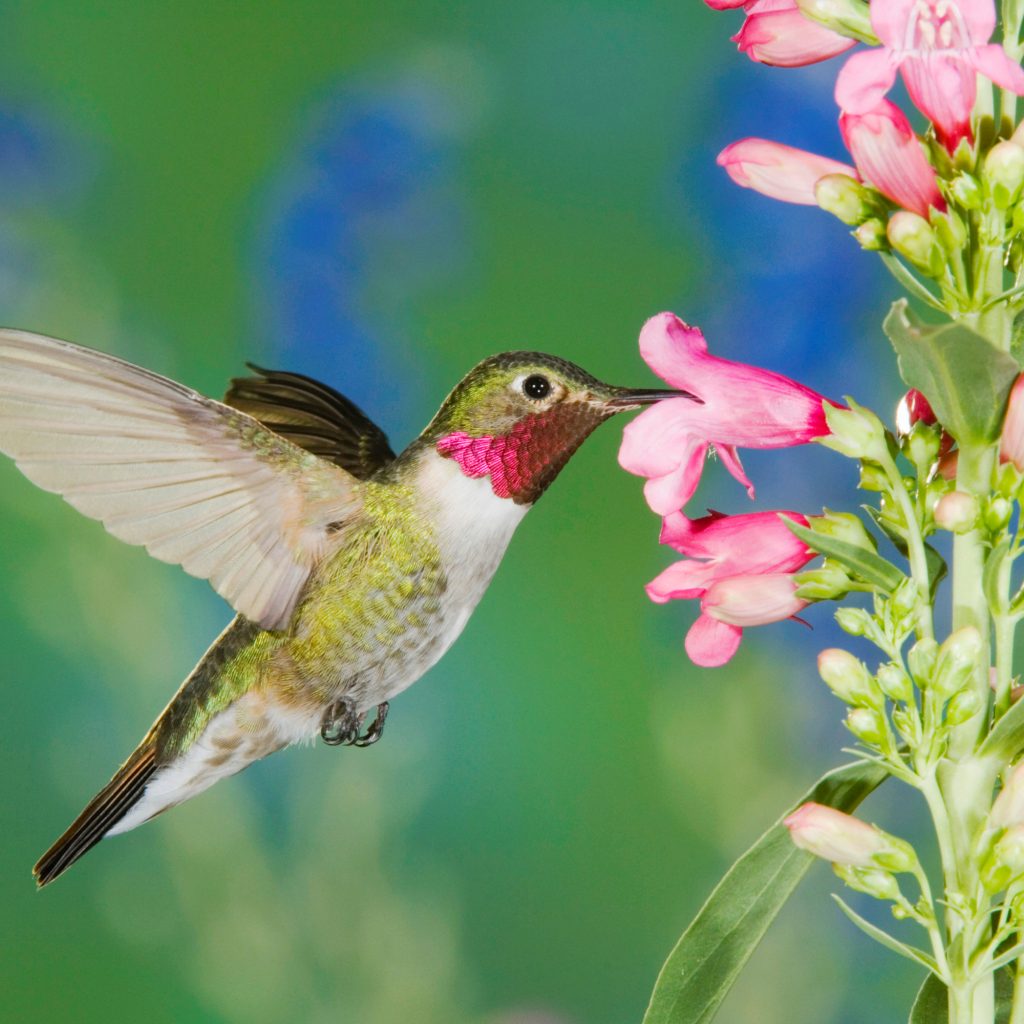Have you ever wondered how those tiny, fast-moving hummingbirds help your garden bloom? These little birds do more than just look beautiful—they play a crucial role in the life of flowering plants.
Understanding what a hummingbird does for a flower can change how you see your garden and even help you grow healthier, more vibrant plants. If you want to discover the secret connection between hummingbirds and flowers, keep reading. You’ll learn how these amazing creatures work hard to keep your garden thriving.

Credit: gardenforwildlife.com
Role In Pollination
Hummingbirds play a key role in helping flowers grow and make seeds. They carry pollen from one flower to another. This process is called pollination.
Pollination helps plants reproduce and produce fruits. Without pollinators like hummingbirds, many plants would not survive.
How Hummingbirds Transfer Pollen
Hummingbirds move pollen while feeding on nectar. Their heads and beaks touch the flower parts that hold pollen. The pollen sticks to their feathers.
- The bird visits a flower to drink nectar.
- Pollen sticks to its head or beak.
- The bird flies to another flower.
- The pollen from the first flower brushes onto the second flower’s stigma.
- This fertilizes the flower, helping it produce seeds.
Flowers Attracted To Hummingbirds
Some flowers are made to attract hummingbirds. These flowers have bright colors and special shapes. They provide nectar that hummingbirds like to drink.
| Flower Characteristic | Reason for Attraction |
| Bright Red or Orange Colors | Easy for hummingbirds to see |
| Tubular Shape | Fits hummingbird’s long beak |
| High Nectar Content | Offers energy for the bird |
| No Strong Scent | Relies on sight, not smell |
Enhancing Plant Reproduction
Hummingbirds play an important role in helping flowering plants reproduce. They move pollen from one flower to another. This process helps plants make seeds and grow new plants.
Understanding how hummingbirds help plants can show us why these birds are vital to nature. They support plant life in many ways.
Increasing Genetic Diversity
Hummingbirds carry pollen between different plants. This pollen transfer mixes genes from various plants. The mixing creates plants with new traits. These new traits help plants survive better in changing environments.
- Pollen moves from one flower to another
- Cross-pollination creates diverse offspring
- New traits help plants fight disease
- Genetic variety improves plant survival
Boosting Seed Production
When hummingbirds pollinate flowers, plants produce more seeds. More seeds mean more plants can grow. This helps plants spread and fill new areas with life.
| Benefit | Effect on Plants |
| Pollination | More flowers get fertilized |
| Seed Production | Higher number of seeds |
| Plant Spread | Plants grow in new places |
Supporting Ecosystem Health
Hummingbirds play an important role in nature. They help flowering plants grow and spread.
By visiting flowers, hummingbirds support many living things in the ecosystem.
Maintaining Plant Populations
Hummingbirds carry pollen from one flower to another. This helps plants make seeds and new plants.
Without hummingbirds, some plants would have trouble reproducing and may disappear.
- They pollinate flowers while feeding on nectar.
- This process helps plants produce fruits and seeds.
- Healthy plant populations support other animals and insects.
Encouraging Biodiversity
Hummingbirds pollinate many types of flowers. This helps many plant species to grow and thrive.
More plant species mean more food and homes for animals, insects, and birds.
- Different plants support different animals.
- More plants create a balanced and healthy ecosystem.
- Hummingbirds help keep this variety alive.
:max_bytes(150000):strip_icc()/GettyImages-172377609-a7b9a94e3dac46b9a14c354daf4bfbcf.jpg)
Credit: www.marthastewart.com
Mutual Benefits For Birds And Plants
Hummingbirds and flowering plants help each other survive and grow. The birds get food from flowers. The plants get help to make new seeds.
This teamwork between birds and plants is called mutualism. Both sides gain important benefits from their connection.
Nectar As A Food Source
Nectar is a sweet liquid inside flowers. Hummingbirds drink nectar to get energy for flying. It is their main food source.
- Nectar has sugar, which gives quick energy.
- Hummingbirds visit many flowers to feed.
- While feeding, they carry pollen from one flower to another.
- This pollen helps plants make fruits and seeds.
Adaptations In Flowers And Birds
Flowers and hummingbirds have special features that help them work well together. These adaptations improve feeding and pollination.
| Flower Adaptations | Bird Adaptations |
| Bright colors attract birds | Long, thin beaks reach nectar |
| Tube-shaped flowers fit beaks | Fast wing beats hover near flowers |
| Strong scents guide birds | Good memory to find flowers again |
| Sticky pollen sticks to birds | Brushy tongues collect nectar |
Impact On Garden And Agriculture
Hummingbirds play an important role in gardens and farms. They help flowers grow by moving pollen from one flower to another. This action supports plant reproduction and helps gardens stay healthy.
Farmers also benefit from hummingbirds. Their pollination helps crops produce more fruits and seeds. This makes hummingbirds valuable partners for agriculture.
Promoting Healthy Gardens
Hummingbirds visit many types of flowers. Their feeding helps plants spread pollen, which leads to new plants growing. This keeps garden plants strong and thriving.
- Increase flower pollination for better growth
- Help maintain plant diversity in gardens
- Support the life cycle of flowering plants
- Attract other beneficial insects and birds
Aiding Crop Pollination
Hummingbirds help pollinate crops like berries, coffee, and some fruits. Their visits improve crop yields and quality. Farmers rely on hummingbirds to support natural pollination.
| Crop | Pollination Benefit |
| Blueberries | Better fruit set and size |
| Coffee | Improved flower fertilization |
| Tomatoes | Increased fruit production |
| Squash | Higher seed quality |

Credit: www.homesandgardens.com
Frequently Asked Questions
How Do Hummingbirds Help Flowering Plants?
Hummingbirds transfer pollen while feeding on nectar. This process aids plant reproduction and promotes genetic diversity in flowers. Their visits ensure flowers can produce seeds and fruits effectively.
Why Are Hummingbirds Important For Pollination?
Hummingbirds are key pollinators for many flowers. They reach deep into blossoms, carrying pollen on their bodies. This helps plants reproduce and maintain healthy ecosystems.
What Flowers Attract Hummingbirds Most?
Bright, tubular flowers with red, orange, or pink colors attract hummingbirds. These flowers provide nectar that fuels the birds and supports pollination.
Can Hummingbirds Affect Plant Growth?
Yes, by pollinating flowers, hummingbirds help plants produce seeds and fruits. This supports plant growth and the spread of flowering species.
Conclusion
Hummingbirds play a vital role for flowering plants. They help in pollination. This ensures plants grow and produce seeds. These birds transfer pollen between flowers. This simple act is crucial for plant reproduction. As a result, gardens thrive and ecosystems flourish.
Hummingbirds and plants share a symbiotic relationship. Each benefits from the other. Next time you see a hummingbird, appreciate its work. It’s not just a beautiful sight. It’s nature at work, ensuring life’s continuity. Understanding this bond can deepen our appreciation for nature’s wonders.
So cherish and protect these tiny creatures and their floral partners.

